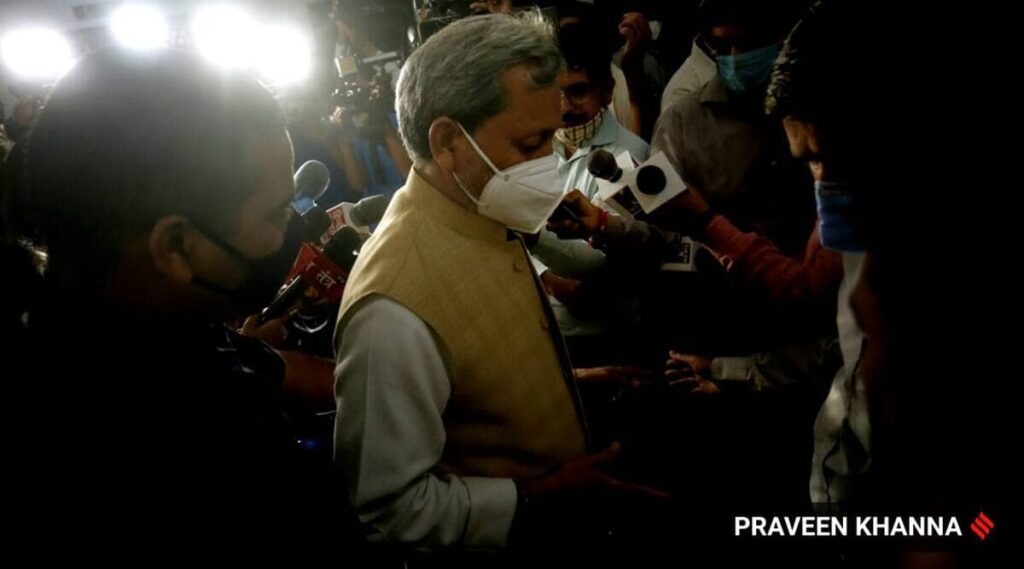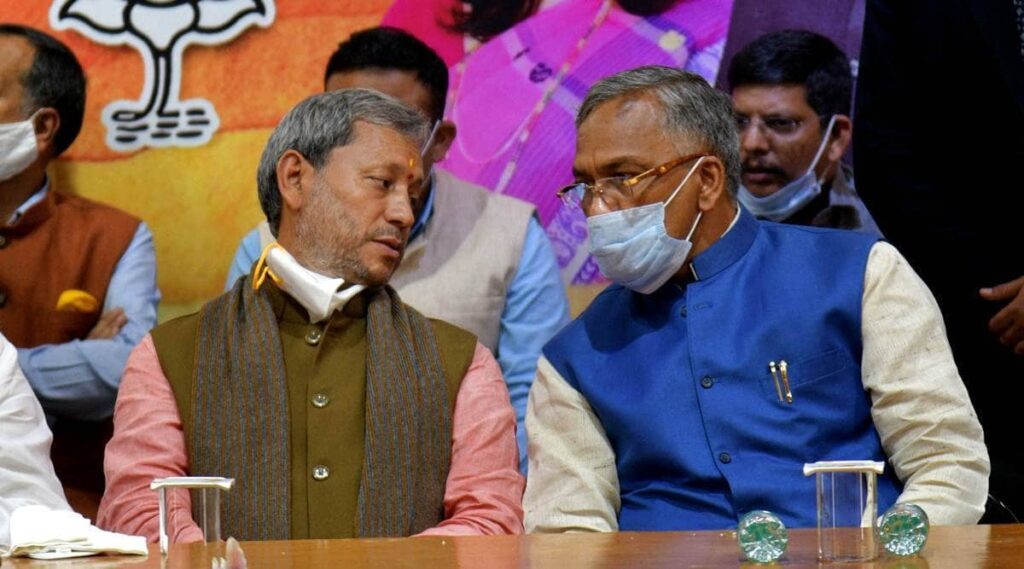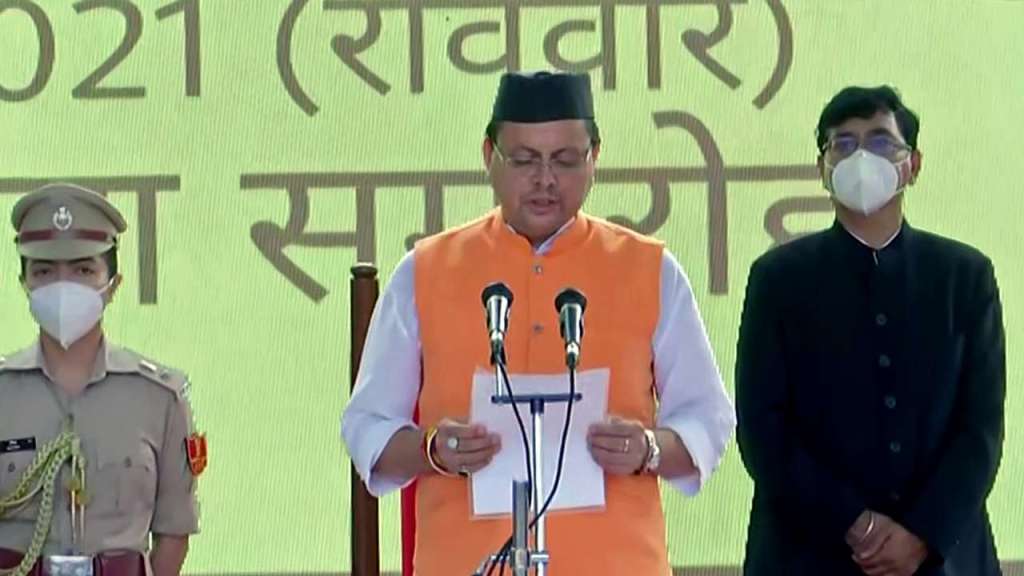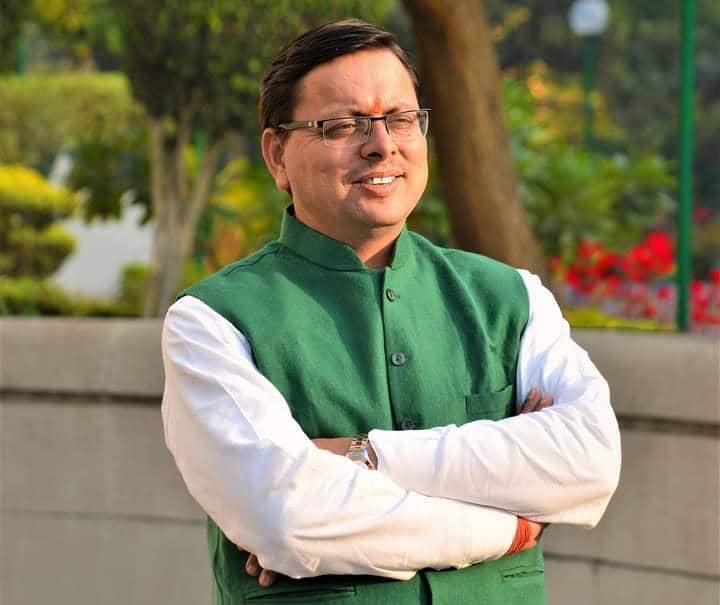On July 2, Tirath Singh Rawat announced his decision to step down from the Uttarakhand CM post with the state legislative assembly yet to dissolve in less than a year. The public statement came by the end of some serious developments after he was summoned to Delhi and had talks with the BJP President JP Nadda and Home Minister Amit Shah. This paved way for the third Chief Minister for the state this term and that too within just five months of two resignations from the seat.

The event had generated important political discussions as it bore a lot weight on the image of the BJP rule in the state as well as the party’s regional unanimity. Tirath Singh had been push into a legal limbo due to the fact that he swore in under “The Representation of People Act”not beinga member of the legislative assembly and was struggling to prove his majority within six months of doing so. The current MP from Garhwal constituency of Uttarakhand had been in very unique circumstances due to being unable to contest in bypolls that were meant to happen this year.
Under Section 151A of the same Act, bypolls are to be conducted within 6 months of the vacancy of the seat provided that the remainder of the term of the new member is one year or more and there were incidentally two such seats at the time – Gangotri and Haldwani.
While Gangotri was a sitting seat of BJP, Haldwani was that of the former opposition leader from Congress. Despite so, party sources suggest that the leadership had still doubted Tirath Singh’s likelihood of winning from the Gangotri seat even if the elections were to take place. What was also instrumental in the EC’s citing of difficulty in conducting bypolls was the influx of covid cases in the state and a consequent caution from the SC to put all possible elections on hold.
Technical reasons aside, it was some major controversies that contributed to the untimely resignation. The biggest of them all was the fake RT – PCR testings during the Kumbh Mela that took place this April, with blame going to the administration and it’s the alleged association with Max Corporate Services.
About one lakh fake testing had been done during the auspicious event by the company, which was given the contract despite previous rejection due to apparent key party connections. The responsibility of the controversy went to the CM too as the approval happened shortly after his ascension to the post, as it bypassed much of official procedure.
This event had cost his public and even in-party popularity regionally as ultimately the much awaited Kumbh Mela event lead to increase in covid spread with delayed action due to initial complacent yet wrong reporting. The local leaders’ disapproval didn’t help the situation for the CM, who was hoping to solidify support for his position within the party. So poor performance as well as controversial statements from the CM are cited by many as a reason for his departure from the administration alongside circumstantial difficulties.

The incident doesn’t become easier for BJP as the previous CM had to relinquish the post this same year. Trivendra Singh Rawat was no stranger to controversies like his successor through string of statements that he made since the beginning of the current term. Dissonance in party arose with complaints from a faction of Uttarakhand BJP MLAs over his ‘style of governance’ and after a strikingly similar manner of discussion in Delhi with top leaders, Trivendra Singh stepped down by March 10.
This recent track record has caused the opposition to accuse the party leadership of “giving a long list of chief ministers” instead of delivering a “double engine government to the state with BJP in power in Dehradun and Delhi”, in the words of senior Congress leader and former CM Harish Rawat. He also pointed out that in the two terms BJP has ruled the state, it has had 8 chief ministers in total. Political critics allege the party of serious internal discord and even inability to smoothly manage administration of the state.
Another big accusation was in relation to the core BJP leadership trying to stall Bengal CM Mamta Banerjee. She finds herself in a predicament similar to Tirath Singh after a tough race in the recent assembly elections, as she lost in the Nandigram constituency. She looks forward to contesting in the by-election of Bhowanipore and proving legitimacy under the Representation of People Act within 6 months.
The Centre government had hoped to set precedent through Uttarakhand incident of preferring its CM to quit than to wait for bypolls that pose a danger of covid spread after the second wave. Many see this as an attempt to sabotage the TMC rule in Bengal after being unable to seize power in the assembly elections. However, as of now the by-elections in all seven legislative assembly seats in Bengal have been announced by the Election Commission and this allegation has since faded away.

Looking ahead
After much discussion and avid speculation, Pushkar Singh Dhami was announced as the third Chief Minister of the term by July 4. A voting of all 54 BJP legislators under the supervision of Union Agriculture Minister Narendra Singh Tomar and BJP general secretary D Purandeshwari yielded the name of Mr. Dhami, who is a two-time MLA from Khatima.
With close associations to former Uttarakhand CM and current Maharashtra Governor Bhagat Singh Koshiyari and Defense Minister Rajnath Singh, Pushkar Singh brings hope to both regional and central leadership to finally end the party’s bout with controversies. Mr. Dhami, who is also the youngest CM in the history of the state, had extended olive branch through courtesy visits to his predecessors and senior party leaders. This move is seen by many as a clear attempt to strike the right regional and communal balance in the BJP administration in Uttarakhand.
Written by- Hisham Shajahan
Edited by- Sameera Vasista




